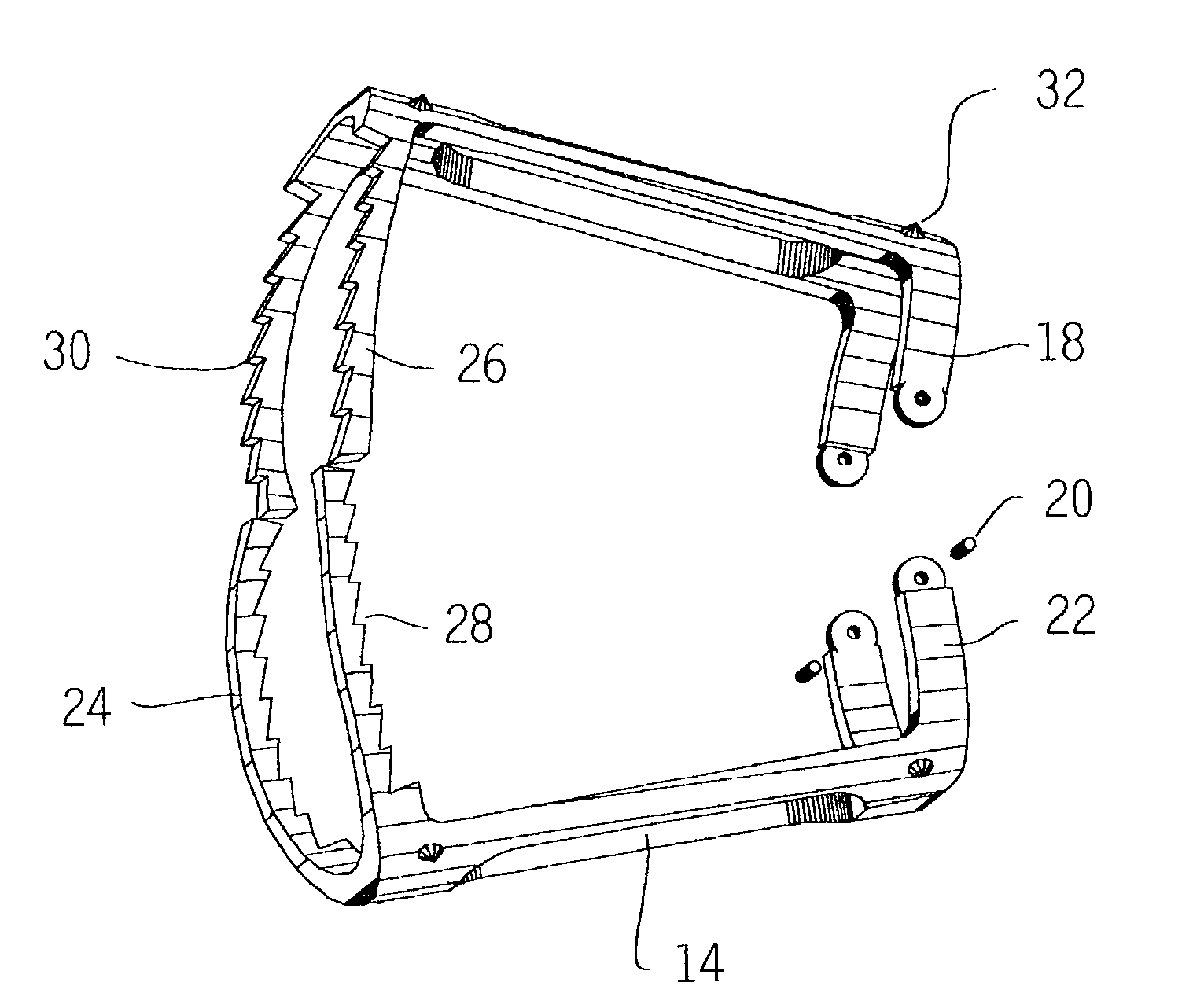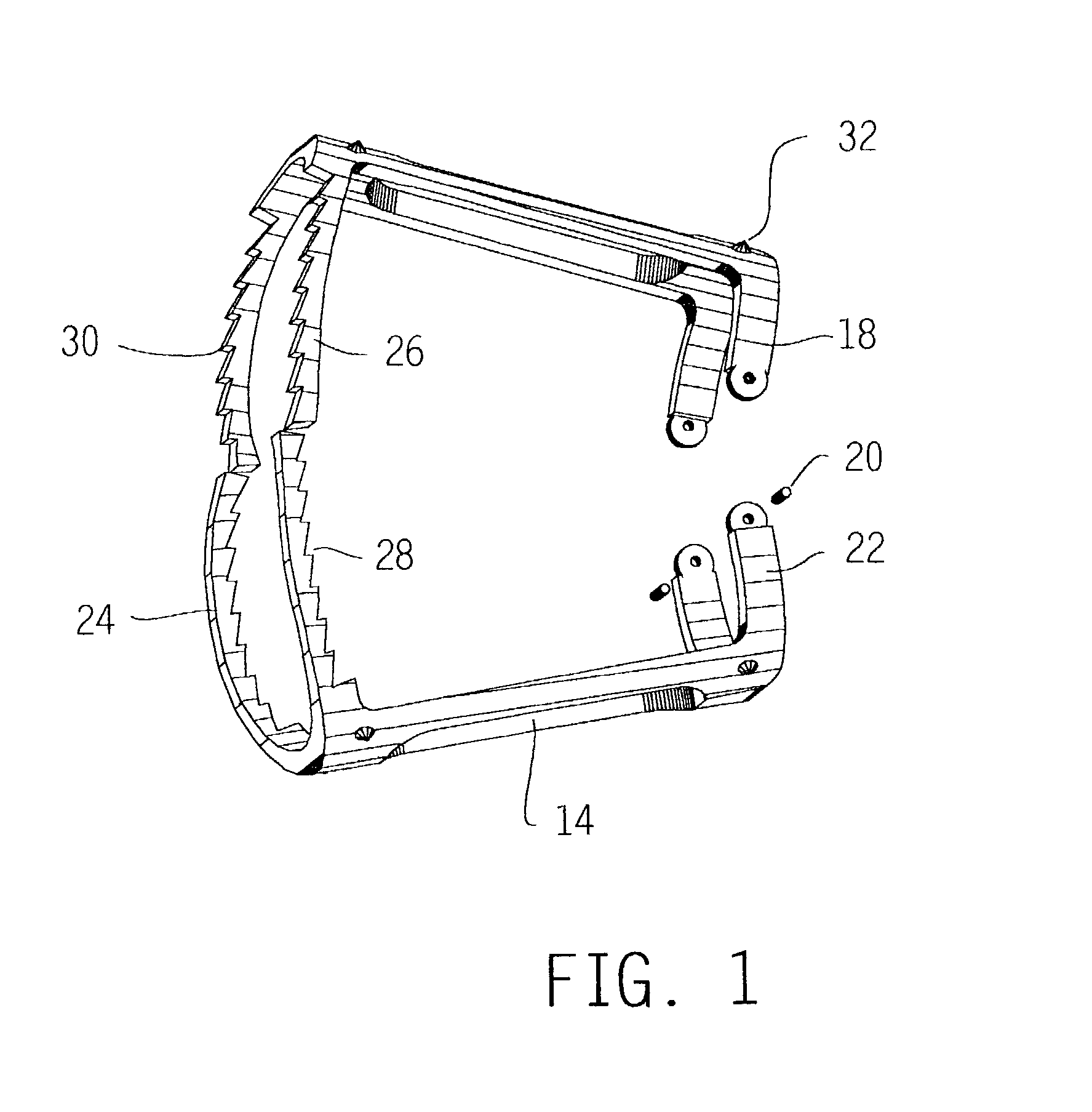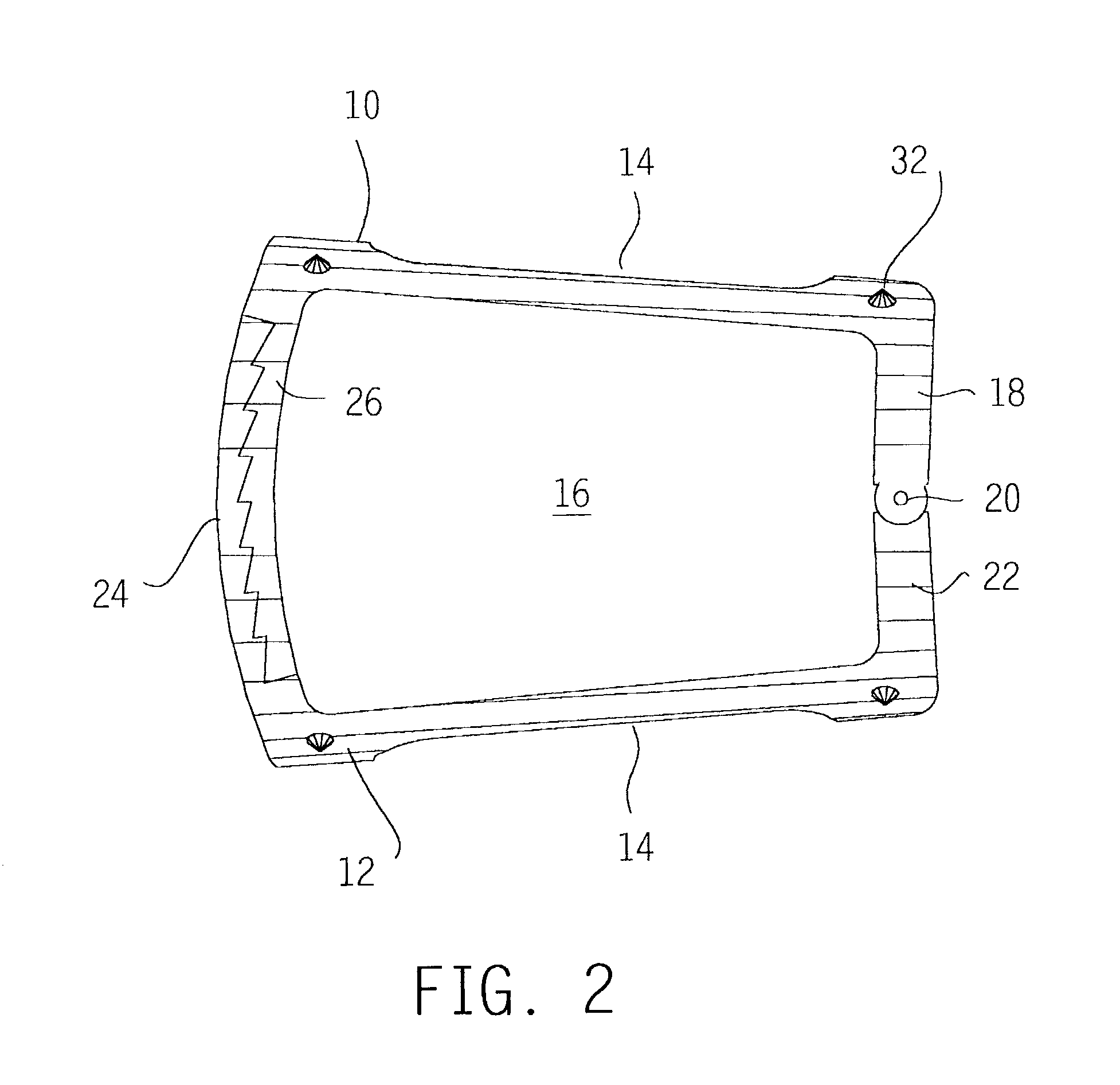Lordotic fusion implant
a fusion implant and vertebral technology, applied in the field of intervertebral fusion implants, can solve the problems of disc herniation or protrusion, disc breakage or degeneration, and variety of problems or disease states, and achieve the effects of maximizing preservation of posterior bony and ligament spinal elements, reducing the retraction of neural structures, and simple manufacturing
- Summary
- Abstract
- Description
- Claims
- Application Information
AI Technical Summary
Benefits of technology
Problems solved by technology
Method used
Image
Examples
Embodiment Construction
[0021]An expandable intervertebral fusion implant embodying the invention appears in FIGS. 1–3. The implant comprises a pair of mating metal shells 10, 12. Each shell is generally sermicylindrical or, more accurately, semi-frustoconical. The vertical and horizontal bone growth windows 14, 16 define four legs on each shell: the two shorter legs 18 on the upper shell 10 are connected by hinge pins 20 to the opposite legs 22 on the lower shell 12. The longer legs 24 on the lower shell overlap those 26 on the upper shell, and these legs have teeth 28, 30 on their overlapping surfaces. The teeth are raked in opposite directions, to permit expansion of the shells by a surgeon, but to prevent unintended collapse thereafter. The ratcheting action also provides useful tactile or audible feedback to the surgeon. In one embodiment of the invention, each of the teeth 28, 30 on each of their respective legs 24, 26 are equidistant (for example, distances R in FIG. 3) from the hinge pins 20.
[0022]...
PUM
| Property | Measurement | Unit |
|---|---|---|
| diameter | aaaaa | aaaaa |
| height | aaaaa | aaaaa |
| size | aaaaa | aaaaa |
Abstract
Description
Claims
Application Information
 Login to View More
Login to View More - R&D
- Intellectual Property
- Life Sciences
- Materials
- Tech Scout
- Unparalleled Data Quality
- Higher Quality Content
- 60% Fewer Hallucinations
Browse by: Latest US Patents, China's latest patents, Technical Efficacy Thesaurus, Application Domain, Technology Topic, Popular Technical Reports.
© 2025 PatSnap. All rights reserved.Legal|Privacy policy|Modern Slavery Act Transparency Statement|Sitemap|About US| Contact US: help@patsnap.com



